In the rapidly evolving digital era, SMS marketing has emerged as a powerful option for businesses, providing fast, straightforward means to reach customers.
SMS marketing consists of sending marketing materials, promotional offers, and news in the form of text messages. SMS messages boast a higher open rate than emails: 98% of messages are opened within two hours of sending, according to global communications platform Kaleyra. People are also likely to respond positively to offers and promotions shared via SMS messages, making it a successful marketing communication channel.
This article will cover the benefits of SMS marketing, best-practices for creating SMS messages, and ways SMS can be used in marketing.
Benefits of SMS Marketing
Although SMS messages are short (up to 160 characters), they can offer numerous benefits to businesses.
1. Speed and Simplicity
The simplicity and speed of SMS marketing play a crucial role in its success. They boast a total read rate of 70% within 1-5 minutes, according to EZ Texting.
SMS messages are delivered faster than emails, reaching many people simultaneously. And the 160-character limit ensures that SMS messages are concise and straightforward, making them easy to read and digest.
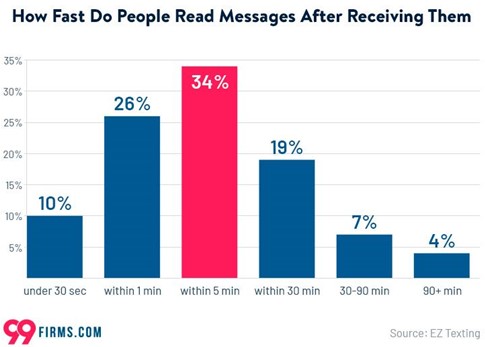
2. Lead Capture and Nurture
SMS marketing can be instrumental in capturing and nurturing leads. Businesses can give leads incentive to sign up for their email lists by sending them text messages.
With customers' contact information in hand, businesses can then send a series of automated text messages to keep leads engaged and nudge them through the sales funnel.

3. Cost-Effectiveness
Unlike many other marketing channels, SMS is a relatively cost-effective communication channel. It's especially beneficial for new businesses that want to make an impact without breaking the bank.
4. Mobile Responsiveness
SMS messages are universally responsive across all mobile devices, eliminating the need to create responsive email templates for different devices and browsers. That leads to marketers' saving time that they would have spent on emails, previewing how they would look on various email clients and browsers before sending them out officially to their recipients.
5. Integration With Other Marketing Types
SMS can be integrated with other forms of communication, such as email marketing, Web push notifications, and social media, to boost its effectiveness.
For example, a simple SMS reminder asking contacts whether they've read a specific email can increase email open rates 20-30%, according to Smart Insights.
6. Opt-In and Opt-Out Ease
In an era of stringent data protection laws, businesses must obtain customers' consent to send messages, including SMS.
As in email marketing, SMS marketers should clearly reveal to leads that by giving their contact information, they agree to receive marketing messages. However, if certain recipients wish to opt out for any reason, the option should be clearly visible to them: simply allow them to reply to your SMS messages with "STOP."
Crafting Effective SMS Messages: Best-Practices
1. Acquire permission
As previously noted, always obtain permission before sending SMS messages. You can build your lists through relevant landing pages, popups, or opt-in forms. Just be transparent about what customers are subscribing to.
2. Personalize your copy
Segment your audiences based on demographic, psychographic, and behavioral patterns; then use that information to understand pain points and preferences and tailor your text messages accordingly.
That data can be obtained by asking your visitors questions upon filling out your form fields. Examples of those are country or region where they are located, age, preferences, how they heard about your brand, etc. Behavioral data can be obtained by questions such as how much they are engaging with your brand, when they last interacted with your website pages, how many pages they visited, how many emails they've opened, and other information retrieved at a later stage.
Also, using short codes can be a quick and easy way to personalize messages. Calling recipients by their names in SMS messages might entice them to click through the link in those messages and take action.
3. Showcase your identity
SMS messages appear from a number that may not be instantly recognizable to customers. Start your message by identifying yourself and your company name to avoid confusion. That can lead to improving your relationship with your customers while helping them easily recall your messages and avoid unsubscribing.
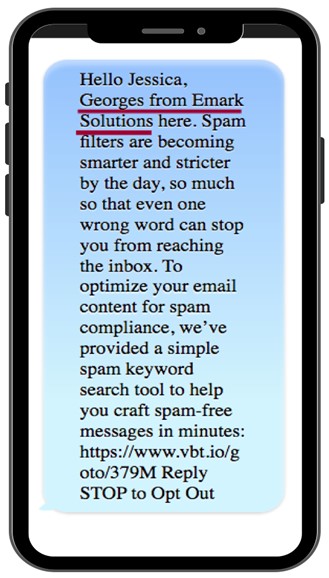
4. Limit message frequency
Avoid sending messages too frequently, because that can annoy your customers. As a rule of thumb, limit your messages to three per week initially, then monitor your analytics to find the perfect balance.
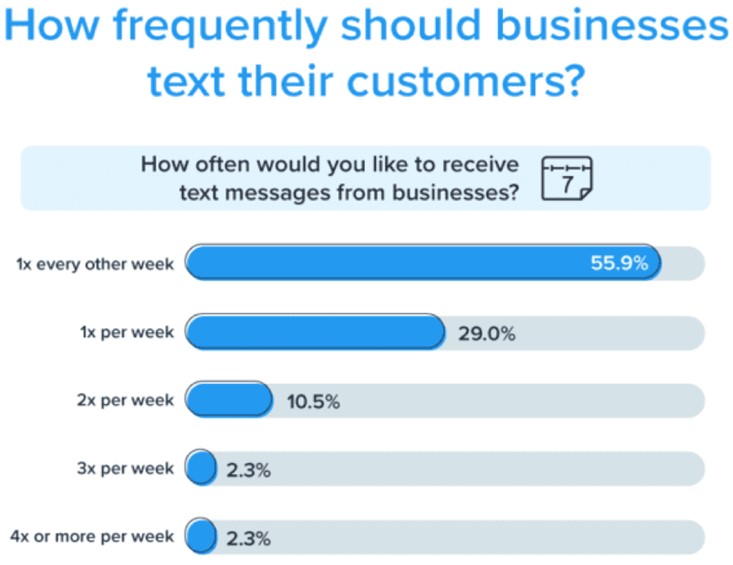
Source: VinterActive
5. Time your messages effectively
Send SMS messages when your customers are most likely to be active. Sending messages at midday, coinciding with lunch breaks, or between 10 AM and 8 PM can yield the best results, according to MailCharts.
6. Be brief
Texts have a 160-character limit, so brevity is critical. Be specific about your offerings and succinctly communicate the value you're delivering. Avoid industry jargon that may alienate some recipients.
7. Offer opt-out options
Data protection laws and privacy regulations are becoming stricter, and many recipients do not wish to receive SMS messages from random phone numbers that look spammy in nature, so always offer clear opt-out options.
Besides protecting your company from potential lawsuits, that gesture is appreciated by recipients, and it helps maintain clean lists of genuinely interested customers.
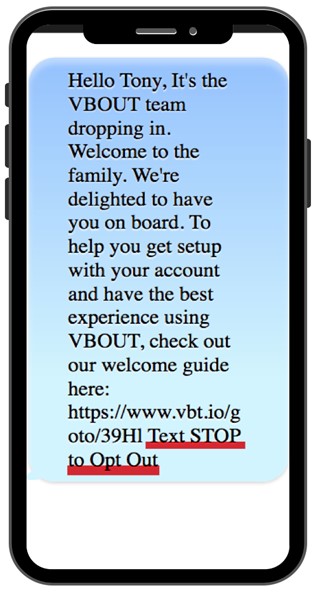
8. Monitor, track, and improve
Use analytics to monitor how your contacts engage with your messages. Observe the total SMS messages opened, the number of unique clicks, conversion rate, and unsubscribe rate.
Based on that data you can create more targeted messages, plan re-engagement campaigns, and segment your audience more effectively.
Don't be afraid to experiment with different text lengths and sending times, and observe how your recipients respond.

The Versatility of SMS Marketing
The beauty of SMS marketing lies in its versatility. You can use SMS in a myriad of ways to drive customer engagement.
1. Promotions
Sending coupons or discounts through SMS is a proven way to get customers to take advantage of your promotions. Including a coupon code in your message allows recipients to redeem it instantly.
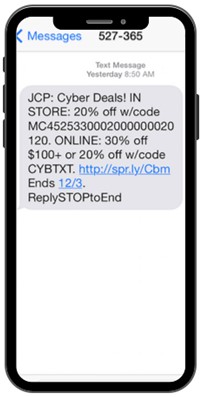
Source: Tatango
2. Onboarding
Enroll new signups using your SMS onboarding sequence. The omnichannel approach ensures that new customers are well-informed and feel cared for across all platforms, including email, SMS, Social media, and Web push notifications.
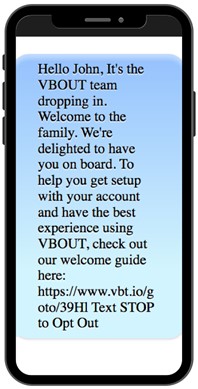
3. Product Reviews
Invite customers to review your product in return for gift cards. Thank them for their loyalty, mention the rewards they will receive, and include a link for them to share their experience.
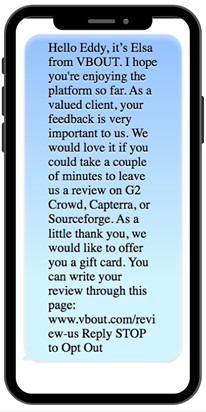
4. Loyalty Programs
Businesses often run loyalty programs through SMS. It's a great strategy to retain loyal clients and give incentive for repeat purchases.
5. Event Reminders
Sending SMS reminders for webinars, training sessions, or events is good practice. A short, 160-character message can clearly explain the value of attending your event and remind them of the details.
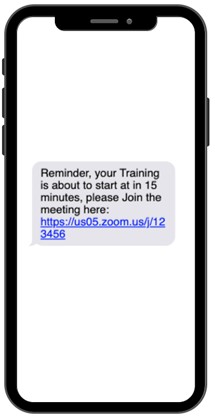
Source: Greminders
6. Others
You can use SMS marketing to request survey responses, promote e-book downloads, confirm purchase or shipment orders, and more.
* * *
SMS is a powerful marketing communication channel that marketers should take into consideration. It has high engagement rates while being affordable and versatile; it offers a direct line to your customers, unlike other channels, such as email, social media, or push notifications.
When used properly, SMS can significantly improve your overall marketing effectiveness and boost engagement, conversions, and customer loyalty.
The key to successful SMS marketing lies in respecting your customers' preferences, maintaining transparency, and consistently tweaking your performance based on data analytics and feedback.
Happy texting!
More Resources on SMS Marketing Best-Practices
Seven SMS Best-Practices and Tips for Marketers
The Do's and Don'ts of SMS Marketing [Infographic]
11 SMS Marketing Best-Practices for Better, Results-Driven Text Messaging Campaigns




